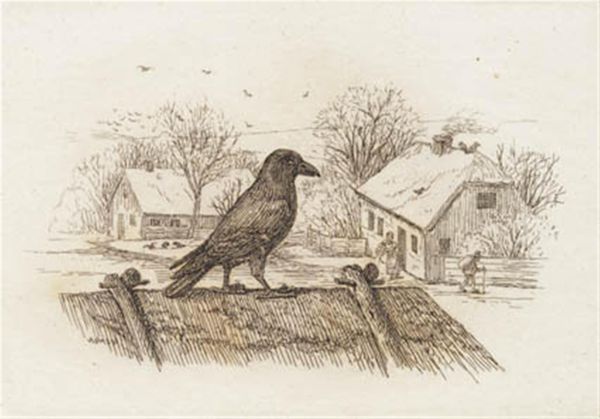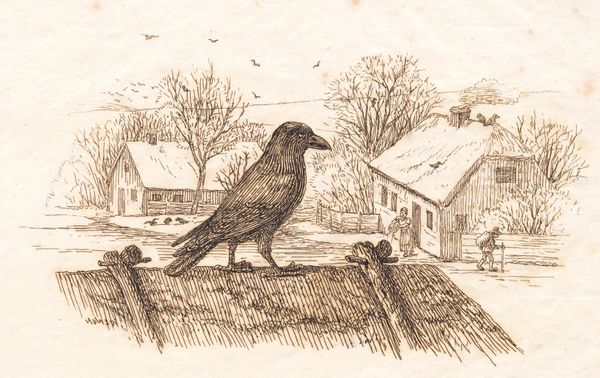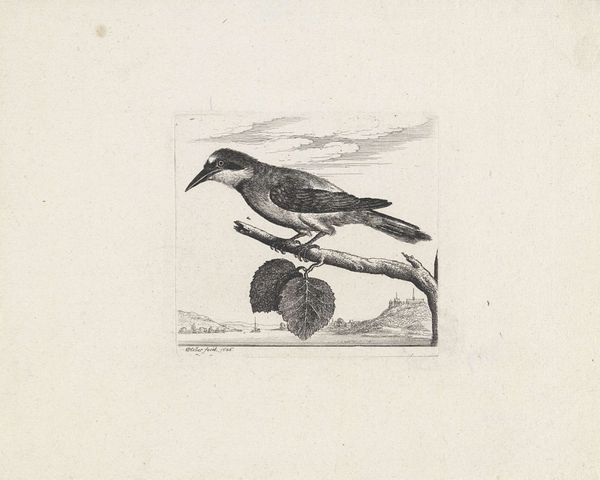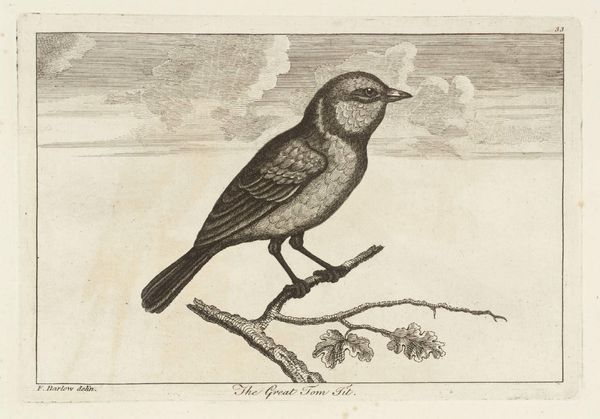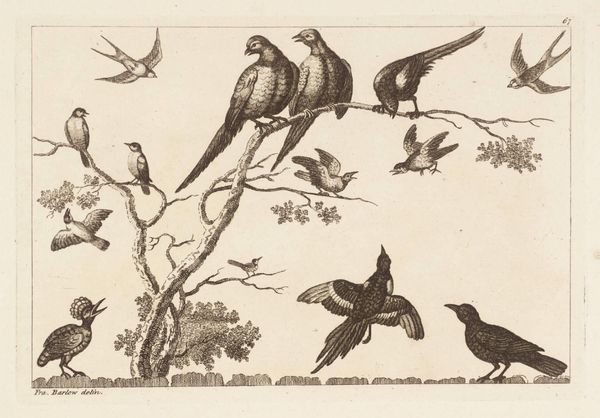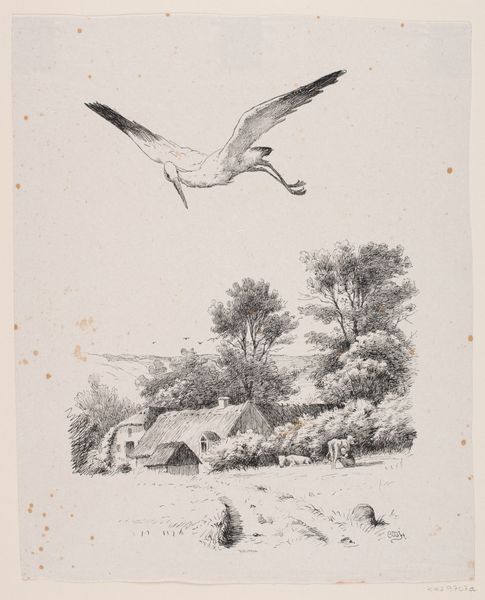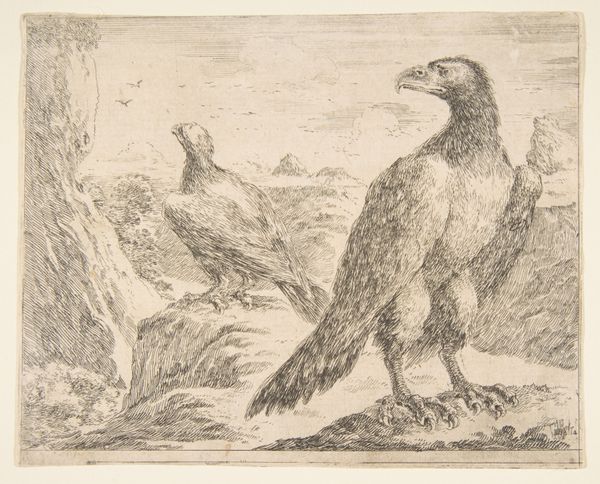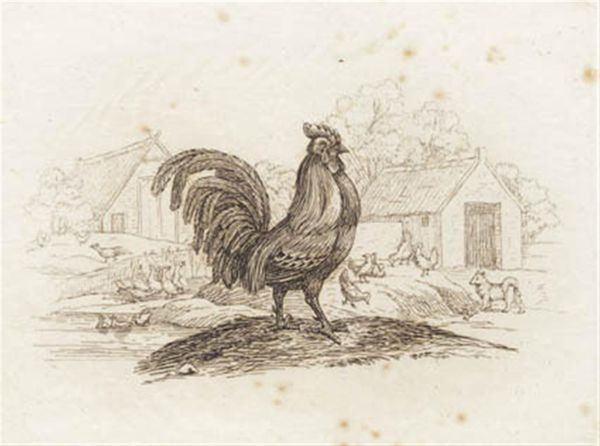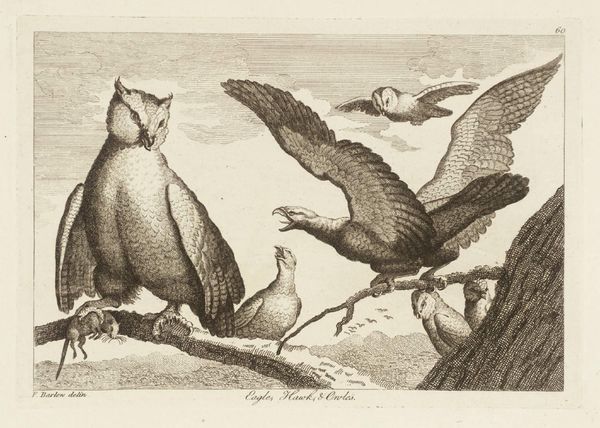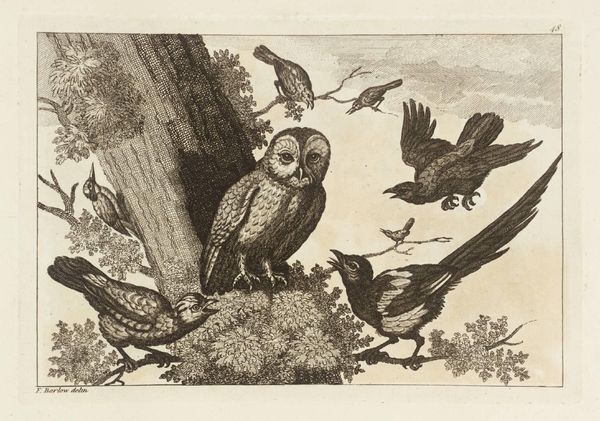
Illustration til "Halvhundrede Fabler for Børn" af Hey 1834
0:00
0:00
drawing, print, ink, pencil, engraving
#
drawing
# print
#
pencil sketch
#
landscape
#
ink
#
romanticism
#
pencil
#
genre-painting
#
engraving
Dimensions: 84 mm (height) x 117 mm (width) (bladmaal)
Curator: This is an illustration created in 1834 by Martinus Rørbye as part of “Halvhundrede Fabler for Børn” or Fifty Fables for Children. It employs drawing, ink, engraving and pencil to capture this genre scene. What are your first impressions of it? Editor: Stark, certainly. The monochromatic palette and the sharp, clean lines give it a very direct, almost unvarnished feel. There's a dominant verticality to the raven and the buildings, contrasted against the textured foreground, creates a sense of depth despite the rather compressed perspective. Curator: Absolutely. The starkness aligns with Rørbye's tendency towards representing social realities and observations of everyday life. Considering the work in the context of fables for children, one can speculate that the dark coloring, for example, and subject matter might be an commentary on children who have gone through loss and difficulty in life. Editor: Yes, and on the surface, it’s a fable about nature, it appears deceptively simple, but the relationship between the foregrounded raven and the distant domesticity could be about access and privilege, perhaps even social alienation or dispossession. What stands out to you? Curator: I am drawn to the details in the houses and how figures in the image engage in labor outside in what looks like snowy weather. It underscores the economic circumstances of much of the population in Denmark at this time in which folks were not shielded from inclement weather, an intersectional theme also captured by Rørbye and other artists depicting life for the popular classes during this period. Editor: You can observe, though, how the crosshatching technique creates variation and volume. Look, particularly, at the depiction of the feathers or even how the rooftops catch a suggestion of light. This detail gives texture to an otherwise seemingly barren winter environment and shows mastery of graphic expression and line work. Curator: Considering the piece from an eco-critical lens, the raven figure serves almost as a commentator—witnessing human disruption, and industrial developments on a once ecologically-harmonious landscape. Editor: A reading supported both by its formal dominance in the composition and its symbolic weight. Considering how skillfully these simple lines and shapes can resonate gives an emotional impact that reflects this image. Curator: For me, it also illustrates how even in seemingly uncomplicated artworks like this, social awareness can become enmeshed. Editor: Indeed. Thank you for bringing such a compelling perspective on it, its intersectionality.
Comments
No comments
Be the first to comment and join the conversation on the ultimate creative platform.
